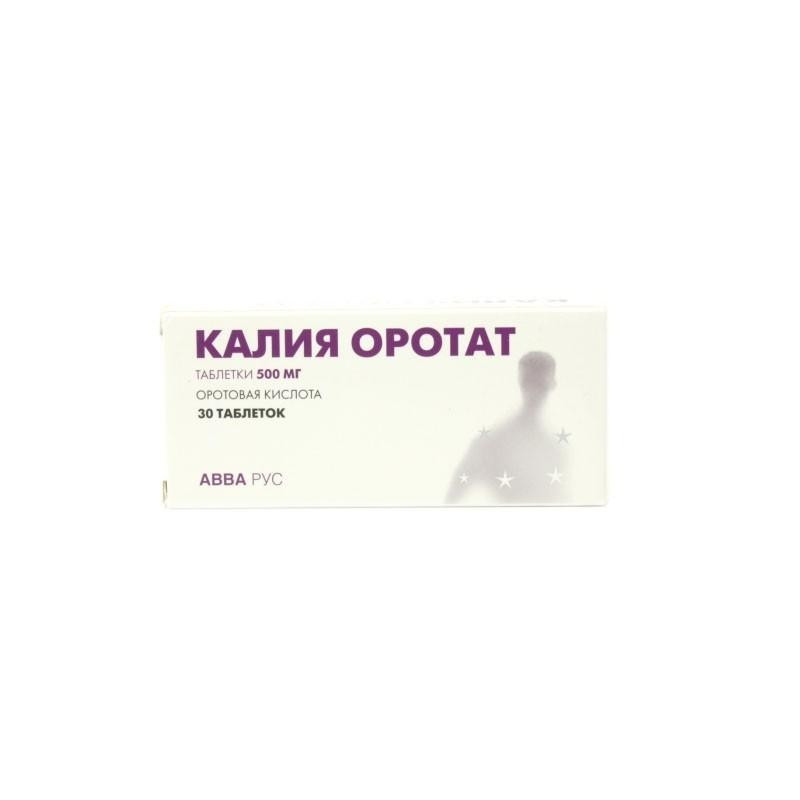



 All payments are encrypted via SSL
All payments are encrypted via SSL
 Full Refund if you haven't received your order
Full Refund if you haven't received your order
Potassium orotate has anabolic and regenerating effects. It is one of the precursors of pyrimidine nucleotides (uracil, thymine, cytosine), which are part of nucleic acids that are involved in the synthesis of proteins. It is used as a regenerant in disorders of protein metabolism, as a stimulator of metabolic processes. It enhances reparative and regenerative processes in tissues, enhances the formation of albumin in the liver, especially in conditions of prolonged hypoxia that occurs in some diseases, for example, in heart failure. Potassium orotate is involved in carbohydrate and lipid metabolism. The participation of orotic acid in carbohydrate metabolism consists in its effect on galactose metabolism. Potassium orotate increases diuresis (has a diuretic effect). Increases appetite. Improves tolerance to cardiac glycosides.
Potassium orotate is used in combination therapy with other drugs (vitamins, cardiotonic drugs, etc.):
- diseases of the liver and biliary tract as a result of acute or chronic intoxication (with the exception of liver cirrhosis with ascites);
- myocardial dystrophy (myocardial dystrophy), myocardial infarction and chronic heart failure II and III stages (as part of combination therapy);
- hypotrophy, dystrophy in children (alimentary and alimentary-infectious);
- anemia;
- progressive muscular dystrophy;
- the period of convalescence after illness;
- cardiac rhythm disorders (especially extrasystole and atrial fibrillation; the effect of potassium orotate is explained in these cases by the presence of potassium ion in the preparation);
- increased physical activity;
- according to other indications, when it is advisable to stimulate anabolic processes.
- cirrhosis of the liver with ascites;
- individual intolerance (including history of hypersensitivity) orotic acid or its salts.
Potassium orotate is used with caution:
- renal failure;
- pregnancy and lactation.
Promising for use in cardiology practice is a combination of orotic acid and Magnesium (magnesium orotat). Potassium orotate cannot be used as a potassium-containing drug for potassium replacement therapy.
1 pill contains: orotic acid (in the form of potassium salt) 500 mg.
Potassium orotate is prescribed by mouth (1 hour before meals or 4 hours after meals). The dose of potassium orotate for adults is from 0.5 to 1.5 g per day in 2-3 doses (250-500 mg 2-3 times per day). The course of treatment is 20-40 days (in some cases longer). If necessary, after a month break, repeat the treatment. In some cases, depending on the effectiveness and tolerability, the daily dose of potassium orotate for adults is increased to 3 g.Children (with alimentary and alimentary-infectious hypotrophy, anemia, during the recovery period after illness, etc.) Potassium orotat is prescribed at the rate of 10-20 mg per 1 kg of body weight per day in 2-3 doses. The course of treatment is 3-5 weeks. If necessary, repeat the treatment after a month's break.
Potassium orotate is usually well tolerated. In some cases, there are allergic reactions (dermatosis), quickly passing after the abolition of potassium orotate. If necessary, prescribe antihistamines. Dyspeptic symptoms are possible. Potassium orotate in high doses can cause liver dystrophy with a low protein diet. If you experience side effects, consult your doctor.
Potassium orotate reduces toxicity and improves the tolerance of cardiac glycosides (digoxin, celanide, etc.). Binding and enveloping agents (de-nol, sucralfate, algaldrat and magnesium hydroxide, etc.) can slightly reduce the absorption of potassium orotate in the gastrointestinal tract. The efficacy of potassium orotate is increased by the simultaneous administration of folic acid and cyanocobalamin.
